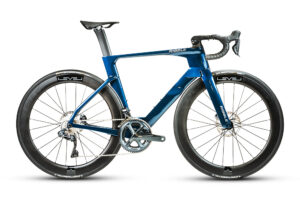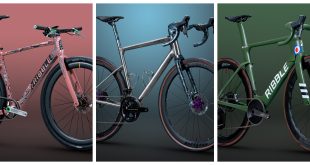Ribble Cycles has launched the new Ultra Road, following the brief to develop the ‘world’s most aerodynamically advanced road platform’.
“The Ultra Road project is the result of three years of development by the Ribble R&D team and is a clear statement of our position as a world-class, innovative and exciting British cycling brand,” stated Andy Smallwood, CEO, Ribble Cycles. “Core to our culture is challenging convention and not being afraid to explore new ground in our pursuit of developing a better performing product.
“The Ultra Road is perfectly aligned to this with its Ribble derived technology giving pro riders and our customers a proven and meaningful performance advantage, meaning this bike is as much for me as it is our Pro Teams.”
The project started with extensive exploration of the specific forces that need to be overcome by the rider, influencing the physical shape and form of the new platform. Firstly, through development, analysis, testing and refined using Computational Fluid Dynamics (CFD) and because bike and rider can never be analysed in isolation it was fundamental to use a 3D digital scan of the Ribble test rider to provide complete consistency across the entire testing process (CFD, wind tunnel to real world).
CFD allowed the team to understand the aerodynamic challenges and how to use the design to maximise and manipulate the airflow to generate a significant performance gain across a full range of YAW (crosswind) angles from zero to an extreme 20 degrees and speeds from Pro rider 29mph and the more average road cyclist speed of 22mph. Every section of the frame, fork, seat post and handlebar has been aerodynamically optimised with particular attention made to component integration, said the brand.
The next stage utilised rapid prototyping for both further aerodynamic as well as ergonomic optimisation with particular attention being made to the handlebar, which is critical from both an aerodynamic and primary rider contact point perspective. When the shape and initial component material layup had been defined, extensive and detailed wind tunnel testing was employed to test and qualify the gains seen at CFD level. The wind tunnel results are ‘extraordinary’ and illustrate the importance of considering the total package of bike and rider to obtain the best aerodynamic efficiencies, said Ribble. The next step was to create rideable samples to fully understand the aerodynamic gains in real-world conditions and to fine-tune the weight, stiffness, handling and ride characteristics by putting the various iterations of the prototype through their paces on the road.
One of the key innovations is the design of the patent-pending Ultra bar. The Ultra carbon integrated cockpit achieves ‘unmatched’ aerodynamic integration through innovation, said Ribble. Working as a holistic proposition with the rider, the bars work to manage airflow upstream of the rider with the wake generating design creating a drag reduction zone (DRZ) for the rider to sit in as well as directing vortexes around the rider further enhancing the airflow. Lightweight, super-stiff and with component integration the carbon monocoque handlebar system has also undergone a full ergonomic study, maximising control, grip and comfort. The design has also been optimised aerodynamically in the drop and the hood positions.
Jamie Burrow, head of product, Ribble Cycles, added: “To understand the full performance of a bike you need to understand how the airflow interacts with the rider and the resultant gains made by the bike and rider as a total package. Minimising drag-inducing effects increases the bike’s aerodynamic efficiency which allows you to maintain the same speed for less effort or more speed for the same effort – either way, the Ultra SL R equals better performance.”
The Ribble Ultra SL R is an aerodynamically efficient performance bike with an improvement over the Endurance SL R with a 75.1 second saving over 40km at 22mph across the average of five and ten degrees of YAW and 61.4 seconds over the same 40km at 29mph. This equates to an approximate three minute saving for the Ultra SL R on a typical 100km ride with average YAW conditions.

The Ultra Road is available as two models: Ultra SL R and Ultra SL – both with multiple pre-spec options and further specification customisation through Bike Builder and full personalisation through Custom Colour. The Platform also includes a Tri Specific version: Ultra SL R Tri Edition.
Builds for the Ultra SL from £3,199
Builds for the Ultra SL R from £3,899
Ultra SL R Frameset £2,999
The Ultra SL R Tri Edition with Di2 at £6,599
Weight: from 7.6kg (based on a medium frame).
Read the August issue of BikeBiz below:
 BikeBiz Bicycle and cycling retail news
BikeBiz Bicycle and cycling retail news




